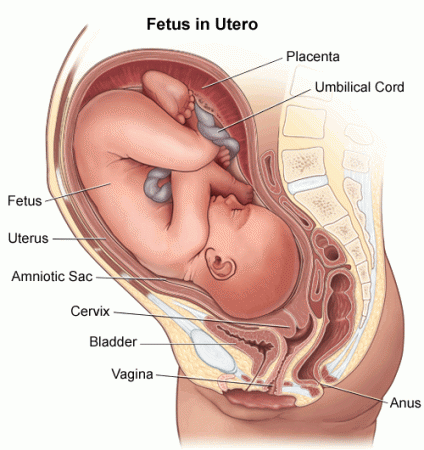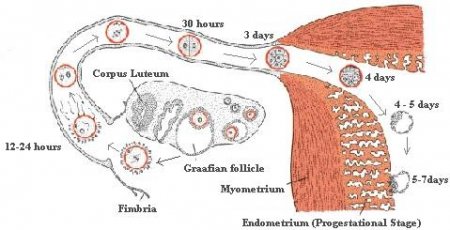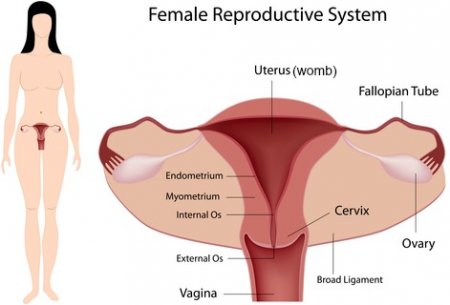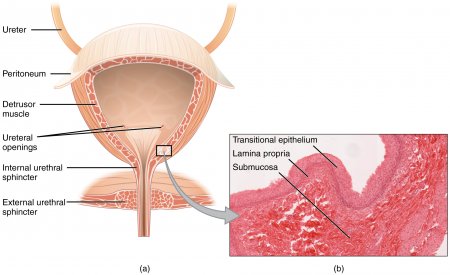The fetus (First Trimester)
- Category: The female reproductive system
- Views: 78858
During the first trimester, the fetus goes through a huge developmental process. For the first eight weeks of its life, the fertilized egg is called the embryo. The embryo develops from an egg fertilized by the sperm. It begins as one cell, which divides into two cells by the time it descends from the fallopian tube into the uterus. These cells divide further until they form two groups - one making up the wall lining of the embryo to become the placenta and the second becoming the embryo itself. Early in the third week, the embryo becomes pear-shaped. The head forms at the rounded end and the spine at the pointed end. These two halves grow toward each other until they fuse to form the neural tube.
The fetus inside the womb
- Category: The female reproductive system
- Views: 81647
The fetus inside the womb is actually called an embryo four weeks after it comes into existence. Around the time of implantation, certain cells within the blastocyst (an early stage of embryonic development) organize themselves into a group that will give rise to the body of the offspring. This marks the beginning of the embryonic period of development. The offspring is called an embryo until the end of the eighth week, after which it is a fetus. Eventually, the outer cells of the embryo together with cells of the maternal endometrium (wall of the uterus) form a complex vascular structure called the placenta. This organ serves to attach the embryo to the uterine wall, to exchange nutrients, gases, and wastes between the maternal blood and the embryonic blood, and to secrete hormones.
The fallopian tubes
- Category: The female reproductive system
- Views: 84282

The Fallopian tubes, also known as the uterine tubes, are a pair of 4-inch (10 cm) long narrow tubes connecting the ovaries to the uterus. Ova (egg cells) are carried to the uterus through the fallopian tubes following ovulation. The ova may also be fertilized while in the Fallopian tubes if sperm is present following sexual intercourse.
Birth and Infancy
- Category: The female reproductive system
- Views: 81128
Birth, also known as childbirth, parturition or partus, is the end point of pregnancy and results in the expulsion of newborn infants from the pregnant woman's uterus. Birth has three stages of labor: the cervix's shortening and dilation, the descent and birth of the infant, and the expulsion of the placenta. Birth can also be done via caesarean section; this is the removal of the newborn through a surgical incision in the abdomen, instead of through the vagina.
Fertilization and Pregnancy
- Category: The female reproductive system
- Views: 80894
Fertilization is the process of joining a spermatozoon and an ovum to form a zygote. Ova, also known as egg cells, are the haploid female gametes produced by the ovaries in the female reproductive system. At around the 14th day of the menstrual cycle, female sex hormones trigger the release of a mature ovum from one of the ovaries. The finger-like fimbriae of the Fallopian tubes sweep the surface of the ovaries to collect the ovum and place it into the hollow Fallopian tube. Once inside the Fallopian tube, the ovum is carried toward the uterus by many beating cilia in the lining of the tube and by peristaltic contractions of the tube. It is during this journey of the ovum toward the uterus that fertilization may occur.
The female reproductive organs of the lower torso
- Category: The female reproductive system
- Views: 80742
The female reproductive system of the lower abdomen and pelvis contains all of the organs necessary for the fertilization of egg cells, development of an embryo and fetus during pregnancy, and delivery of a newborn baby.
The external female reproductive organs are known collectively as the vulva. Within the vulva are several folds of skin surrounding the urinary and reproductive orifices known as the labia majora and labia minora. These folds of skin cover and protect the clitoris, urethral opening, and vaginal opening. Within the labia minora and superior to the urethra is the clitoris, a sensitive erectile organ that is responsible for producing feelings of sexual arousal and pleasure.
The female breasts
- Category: The female reproductive system
- Views: 81407
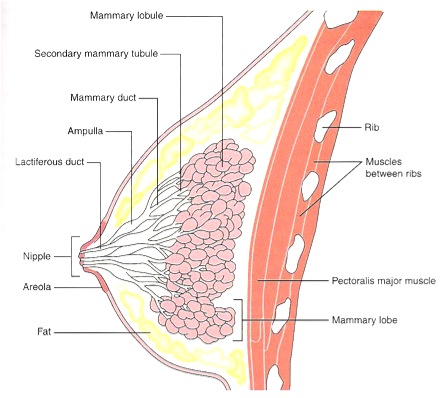
The breasts are a pair of milk-producing organs of the female reproductive system located on the left and right sides of the anterior thoracic (chest) region. Each breast projects outward from the anterior of the chest as a mass of skin-covered soft tissue. At the tip of the breast is a small cylindrical projection of erectile tissue called the nipple. The nipple is bordered by a ring of thickened, bumpy skin called the areola. Both the nipple and areola are highly pigmented compared to the surrounding skin of the breast, resulting in a darkened appearance.
The vulva
- Category: Urinary system, The female reproductive system
- Views: 155881
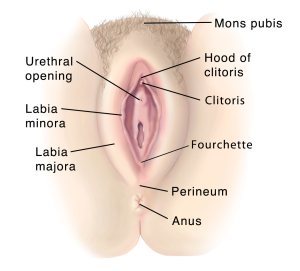
The vulva is the collective name for the external female genitalia in the pubic region, including the labia, clitoris, and urethral and vaginal openings. These organs work together to support urination and sexual reproduction.
The exterior of the vulva begins as a mound of skin-covered adipose known as the mons pubis that arises from the skin covering the pubis bone in the pubic region. As it continues inferiorly, the mons pubis divides laterally into the two parallel labia majora. The labia majora are wide folds of skin and adipose that rise beyond the mons pubis and surround the pudendal cleft, a deep vertical furrow in the center of the vulva. Both the mons pubis and labia majora are covered in pubic hair following puberty and serve to protect the delicate structures of the vulva found in the pudendal cleft.
The vagina
- Category: Urinary system
- Views: 78835
The vagina is an elastic, muscular tube connecting the cervix of the uterus to the vulva and exterior of the body. The vagina is located in the pelvic body cavity posterior to the urinary bladder and anterior to the rectum. Measuring around 3 inches in length and less than an inch in diameter, the vagina stretches to become several inches longer and many inches wider during sexual intercourse and childbirth. The inner surface of the vagina is folded to provide greater elasticity and to increase friction during sexual intercourse.
The urinary bladder
- Category: Urinary system
- Views: 80351
The urinary bladder is a hollow elastic organ that functions as the body’s urine storage tank. Urine produced by the kidneys flows through the ureters to the urinary bladder, where is it stored before passing into the urethra and exiting the body. The urinary bladder plays an important role in delaying and controlling urination so that the average person only has to urinate several times each day instead of constantly leaking small amounts of urine.

